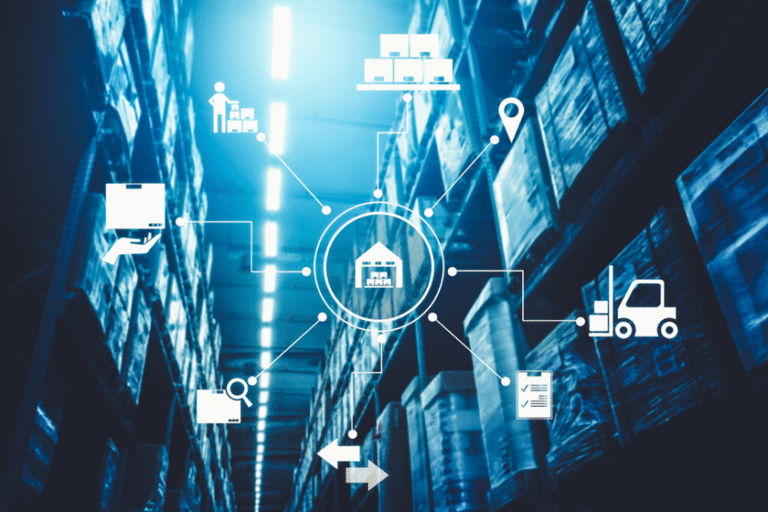Global supply chains are in the middle of one of the most turbulent years in recent memory. From tariffs and trade wars to robotics, AI, and sustainability mandates, 2025 has already delivered a cascade of disruption and innovation. The latest supply chain news reveals how businesses are scrambling to adapt—and in many cases, to turn challenges into competitive advantage. Here are the top 10 supply chain news stories shaping the year so far.
1. Trump’s Tariff Wave Resets Global Sourcing
The White House announced sweeping tariffs on pharmaceuticals, heavy trucks, and home goods, citing national security grounds. Branded drug imports will face duties of up to 100%, trucks 25%, and furniture as high as 50%. According to supply chain news, these moves are forcing companies to accelerate nearshoring into Mexico and Southeast Asia while reevaluating their landed cost models.
2. CarMax and Auto Sector Woes Signal Wider Economic Strain
Used-car giant CarMax reported a sharp profit drop, tied to deteriorating loan performance and weakened consumer demand, sending shares tumbling. At the same time, a subprime auto lender collapsed, and a major supplier is preparing a bankruptcy filing. Supply chain news coverage highlights autos as a bellwether—suggesting stress signals that could ripple across the broader economy.
3. Marks & Spencer Cyberattack Disrupts Retail and Logistics
A large-scale cyberattack hit UK retailer Marks & Spencer, shutting down core systems and delaying food distribution. The attack highlights cybersecurity as a growing supply chain risk, especially as digital platforms expand. According to recent supply chain news, firms across retail and logistics are now reassessing cyber resilience in their supplier networks.
4. AI Adoption Surges in Procurement and Operations
AI copilots, predictive analytics, and digital twins are moving from pilot projects to enterprise deployment. Companies like Siemens, Unilever, and FedEx have reported using AI to model award scenarios, reroute shipments, and stress-test networks against disruption. As widely reported in supply chain news, AI has become the defining technology of 2025 procurement and logistics strategies.
5. Nearshoring Accelerates in Mexico and Eastern Europe
Tariffs and geopolitical tensions are driving a major wave of nearshoring. Mexico is seeing rapid investment in automotive and electronics supply clusters, while Eastern Europe is emerging as a hub for pharmaceuticals and industrial equipment. According to supply chain news, companies are treating nearshoring not just as risk mitigation but as a long-term performance strategy.
6. DHL Canada Shuts Down Amid Union Strike
DHL Express Canada suspended operations following a prolonged union strike, creating ripple effects across cross-border e-commerce and parcel logistics. The shutdown disrupted thousands of daily shipments and underscored labor unrest as a persistent risk. As highlighted in supply chain news, labor disputes remain one of the least predictable but most disruptive elements of global supply networks.
7. Sustainability Mandates Push Scope 3 Into Spotlight
The EU’s Corporate Sustainability Due Diligence Directive (CSDDD) came into force, requiring companies to account for and reduce Scope 3 emissions across their supply bases. At the same time, digital product passport rules are rolling out in Europe. Supply chain news confirms that compliance is becoming a top procurement priority, forcing firms to demand unprecedented transparency from suppliers.
8. Robotics Transform Cold Chain Logistics
Robotics designed for refrigerated and frozen environments are scaling across food and pharmaceutical networks. Companies are deploying machines that improve precision, reduce worker safety risks, and enable continuous operations. According to supply chain news, cold chain automation is one of the fastest-growing robotics segments, helping meet rising demand for frozen food and temperature-sensitive pharmaceuticals.
9. Semiconductor Supply Chains Reshaped by Industrial Policy
Massive U.S. and EU subsidies for chip manufacturing are restructuring semiconductor supply chains. Micron, TSMC, and Intel are expanding capacity closer to demand markets, while supply chain news reports show lingering concerns about equipment bottlenecks and upstream supplier readiness. The policy-driven reshaping of global semiconductor networks is being watched as a blueprint for other industries.
10. Energy-Aware Fulfillment Gains Traction
FedEx and DB Schenker are piloting energy-aware fulfillment strategies—scheduling AMR (autonomous mobile robot) tasks and facility loads based on grid emissions and energy prices. According to recent supply chain news, this approach is reducing Scope 2 emissions while cutting costs. It signals a broader shift toward aligning logistics operations with real-time energy data.
Strategic Themes Behind the Headlines
The top 10 supply chain news stories of 2025 reveal several cross-cutting themes:
-
Tariffs and geopolitics are no longer background risks—they are reshaping sourcing strategies in real time.
-
AI and automation are moving from efficiency plays to resilience enablers.
-
Sustainability mandates are redefining procurement KPIs and supplier selection.
-
Cybersecurity and labor unrest are proving that operational risks can be just as disruptive as trade or technology shifts.
-
Energy integration is becoming a new frontier for logistics optimization.
Conclusion: Supply Chains at a Turning Point
The latest supply chain news shows that 2025 is not a year of incremental change—it is a year of structural resets. Companies are adapting to tariffs, deploying AI at scale, building nearshore clusters, and embedding sustainability into procurement and logistics. At the same time, cybersecurity and labor risks are forcing leaders to think beyond efficiency and focus on resilience.
In 2025, supply chains are no longer quiet enablers in the background of business strategy—they are at the center of global competitiveness. The organizations that adapt to these 10 defining stories will emerge stronger, more resilient, and more future-ready in a world where disruption has become the norm.
